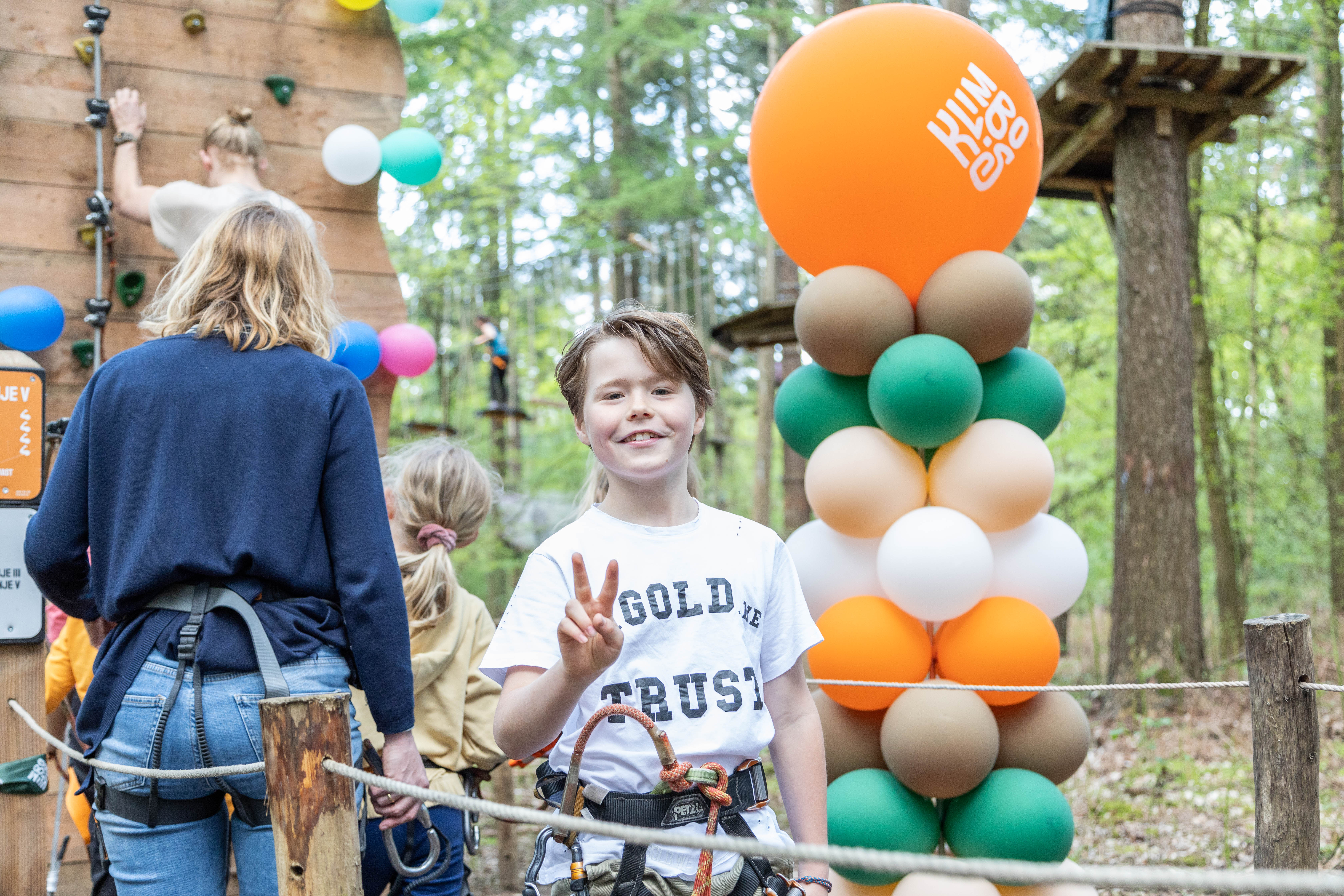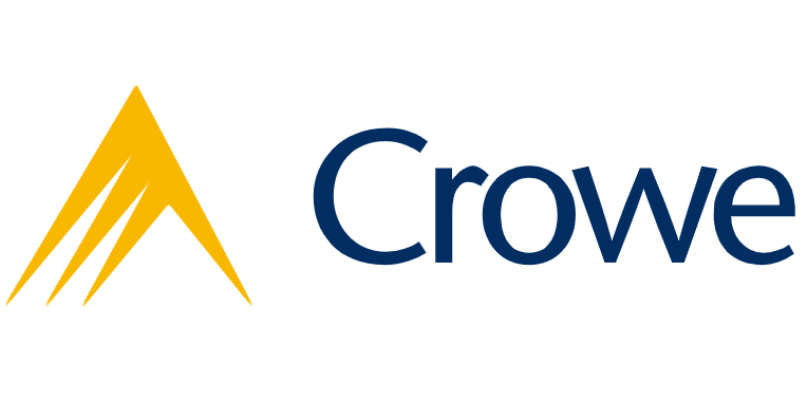Klimbos Nederland has the best climbing parks in the Netherlands. As the name suggests: in this leisure park you can climb among the trees to your heart’s content. With seven to eleven different routes (some just a little more enervating than others), you can spend three hours swinging from the ropes. Klimbos Netherlands opened its first location in Apeldoorn in 2009. The formula proved a success: they now have five branches and are keeping their eyes peeled for other forests to set up new adventures. So, what is the secret of Klimbos Netherlands’ success and what is Workforce Management‘s part in all of it? Dyflexis spoke with Ciaran Barsema, the director and co-owner and Dylan van Ginkel, Operational Manager of Klimbos Nederland, at their Gooi-Eemland location.
The best outdoor experience every day
Most leisure or sports venues operate outdoors with sports fields, or sometimes exclusively indoors. Klimbos Nederland is unique in that sense: Their climbing routes run right through existing forests and are 100% outdoors. It is one of the reasons why their employees go to work with a spring in their step. Dylan: “We work surrounded by nature every day. This green work environment is not the same as your standard office job. The daily outdoor experience is really special, for our employees and our guests alike.”
All the different climbing routes come with their own heights and challenges, so guests can choose the route that suits them best. Ciaran: “It goes without saying that safety comes first for us, even if it may not be immediately obvious to guests. They should just have fun and enjoy the natural environment, and we’ll take care of the rest.” The climbing equipment is of the highest quality and all instructors must go through internal training first. Klimbos Nederland continuously invests in maintenance, new climbing elements and client experience. The employees’ hands-on mentality and hospitality contribute to the overall experience. Dylan: “We’re going for 10 out of 10.”
Flexibility, from three sides
Although working outdoors has its benefits, it also comes with challenges. The weather, for example, affects the number of visitors coming to climb every day. As Dylan explains: “Summer is really the peak period for us in terms of how busy we get. It makes sense, then, that we schedule the most people then. That being said, we also depend on the weather in other seasons. We make appropriate staffing arrangements based on the weather, combined with our work experience.”
Ciaran: “The weather forecast often gives us more trouble than the weather itself. If people see that rain is forecast, they are less likely to show up. The trouble is that sometimes rain doesn’t arrive until the evening, while it actually stays dry during climbing hours.” The weather forecast and its interpretation immediately affect how busy it gets. Needless to say, as a company, you want to react to this as quickly as possible to avoid excessive staffing, or understaffing. Ciaran: “We have also noticed the weather becoming more and more erratic in recent years: it can change just like that. So, if the day turns out to be quieter than expected, we sometimes divide shifts in half. In this way, colleagues can do a half shift and we can avoid people being disappointed because they were scheduled and then couldn’t work.”
“The flexibility of the software features matches the flexibility of our business operations.”
The season lasts from spring break until late November. Dylan: “In summer, we employ 150 people, and in winter, we scale numbers down to 90 people. Dyflexis’ user-friendliness makes scaling up and down ever so easy.” The flexibility of the software features matches the flexibility of their operations. Ciaran: “It’s exactly what our organization needs. It allows us to respond well to the expected crowds each day and season. We employ some people on a permanent basis, and otherwise we work with flex workers. Permanent employees can indicate their standard availability and on-call employees can indicate this by period. Many of the latter are students doing this as a job on the side. Coordinating their work schedule with varying class schedules works nicely for them. So, this flexibility is also useful for them.”
“Dyflexis is also perfect for swapping employees between locations.”
The head office schedules managers by location. In his capacity of Operations Manager, Dylan works at all five forests. Every site works in a slightly different manner. Dylan: “That variety is what keeps my job fun. The site managers draw up the planning for their employees per location, but incidentally employees also switch locations. These factors can all be planned and combined in one single system.” The site managers create work schedules based on people’s stated availability. In Dyflexis, they can immediately see who can work when, which makes planning an absolute doddle. Dylan: “We make schedules for longer periods and work a lot of open shifts.”
“A good work schedule contributes to high levels of employee satisfaction.”
Ciaran: “We are so grateful for the Dyflexis app. Employees get push notifications about available shifts and can decide whether they want to work. Thanks to Dyflexis, we always get the schedules sorted and everyone gets a fair turn.”
Dylan: “The atmosphere at work is sociable, informal and approachable. This results in high levels of employee satisfaction. Taking their preferences in terms of working days into account adds to that. Our employees ARE our company and we believe it is important that everyone enjoys their work. First of all, for the well-being of our staff, of course, but certainly also for our guests. 90% of the client experience is due to our employees. You need to facilitate a good mood.”
Choosing the best system
Klimbos Nederland has been using Dyflexis since 2022. Dylan: “Before, we used another system for 13 years; which we had built in 2009. It was very static and anything but flexible. Sure, it worked, but it was limited in terms of information. At a certain point, it became pretty outdated so we started looking for something else.”
The migration to new software affected the entire company, from the director to managers and employees. Dylan and Ciaran started by gathering all the needs and wishes for each department, to make sure they took everyone into account. Armed with all this information, they approached several software vendors and requested demos.
Ciaran: “We really did our homework because we wanted to make sure we were going to make the right choice. Implementing new software and getting used to it takes time, so it is important that you get it right the first time. Heaven forbid you need to start from scratch again a few years later. Having had several demos, we whittled it down to a top-three. We carefully weighed all the pros and cons. Dyflexis proved the best match for our needs in terms of features and usability.”
Klimbos Nederland’s thorough preparation is really paying off. Dylan: “We are really happy. Change is always difficult, but the implementation of Dyflexis went smoothly. At first, we still wanted to keep our old system running in the background, but that turned out not to be necessary at all. Dyflexis is much more aligned with today’s times, especially with the app as well. We employ so many young people and they do everything on their phones anyway.”
Clear data for efficient operations
In addition to planning and timekeeping, Klimbos Nederland also uses the other software features for their operations. The data from Dyflexis gives them insight into efficiency and personnel costs. It is helpful to always have current data at hand, particularly when it comes to local business operations. Ciaran: “Our main challenge now is to become more efficient on quiet days. Because the managers decide what time services start and end, they try out what works best. In Dyflexis, you can immediately check the effect of shift times on your personnel costs.”
“For operational management purposes, it’s very helpful to always have the current data to hand.”
On the day, managers can make adjustments as needed: If things get busier, employees stay longer, and if it’s quiet they go home earlier. In this way, managers can decide which shift times best fit how the day goes. This choice is always a combination of data, momentum, and experience. Dylan: “We assess the efficiency afterward, based on the best practices that emerge from the data. Site managers share these findings among themselves. In this way, our organization can continuously improve and grow.”



